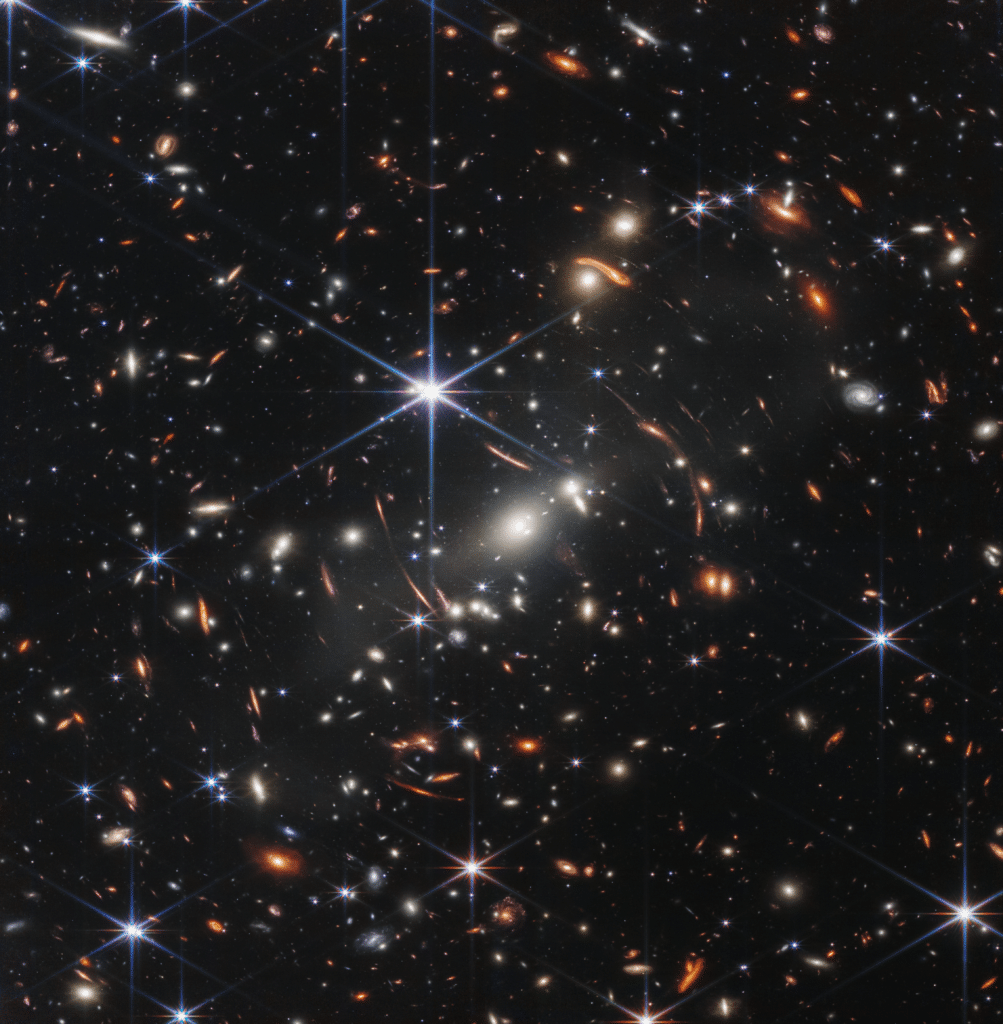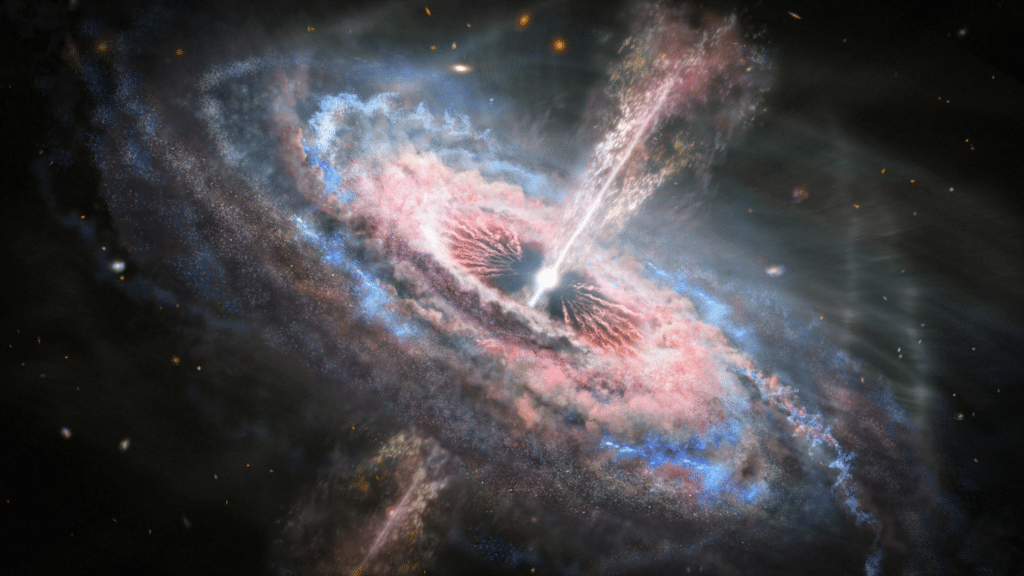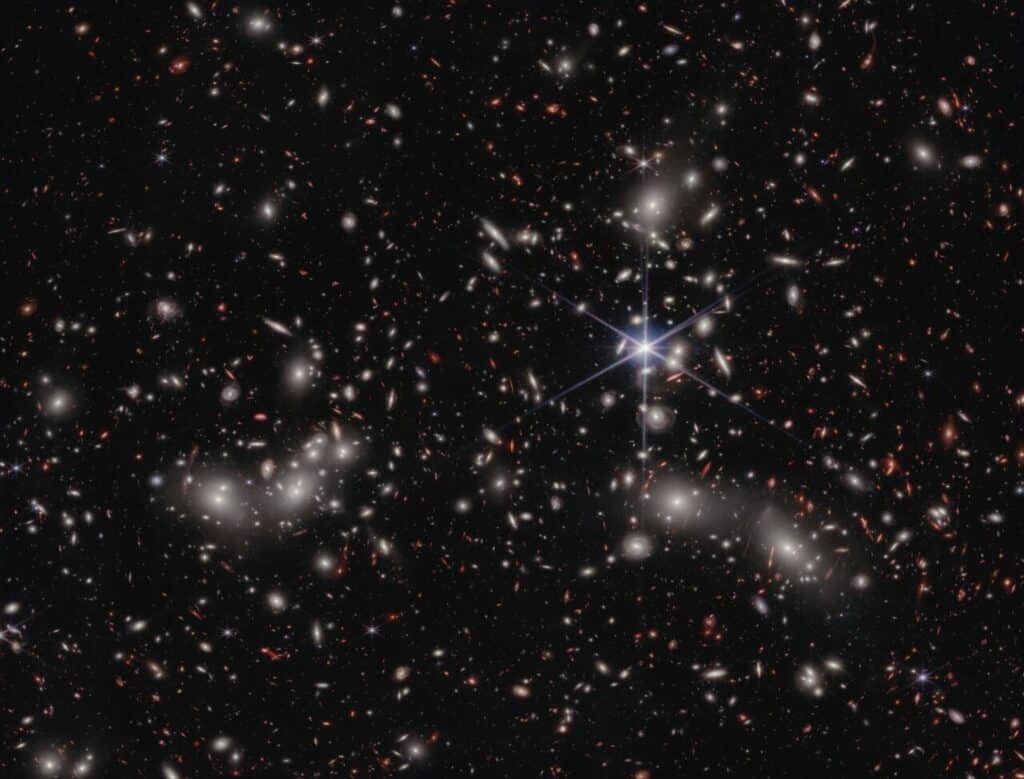Astronomers have finally discovered what turned the lights on at the dawn of time. Using NASA’s James Webb Space Telescope’s (JWST) advanced capabilities, an international team of scientists have revealed that small dwarf galaxies played a pivotal role in a major cosmic event known as reionization during the Universe’s infancy. This finding helps solve a long-standing mystery in astronomy regarding the sources of intense radiation that transformed the early cosmos.
Reionization is a term that might sound complex but refers to a pivotal era in the cosmos’s youth, a time when the Universe was filled with a thick fog of hydrogen gas, obscuring the light. Picture a foggy day when the sun finally breaks through the clouds, lighting up everything around. In the cosmic scale, this “sun” was the first stars and galaxies, their radiation acting like rays piercing through the hydrogen fog, illuminating the Universe. This process didn’t just happen overnight but was a gradual clearing, orchestrated by sources of intense radiation that scientists have long sought to understand.

The quest led an international team to the UNCOVER (Ultradeep NIRSpec and NIRCam ObserVations before the Epoch of Reionization) program, focusing on a galaxy cluster known as Abell 2744, or Pandora’s Cluster. Here, the phenomenon of gravitational lensing played a crucial role. Gravitational lensing occurs when a massive object (like a galaxy cluster) warps the space around it, magnifying and distorting the light from objects behind it. Imagine looking through a glass sculpture at a light source — the light bends and magnifies in unique patterns. In the Universe, this “sculpture” is the mass of galaxy clusters, bending light from distant galaxies to us in a magnified form.
This cosmic magnifying glass revealed eight extremely faint galaxies from the Universe’s dawn, producing ionizing radiation at levels previously underestimated by four times. These galaxies, although diminutive in size, packed a powerful punch, emitting enough radiation to transition neutral hydrogen gas into an ionized state, effectively clearing the early cosmic fog.
“This discovery unveils the crucial role played by ultra-faint galaxies in the early Universe’s evolution,” says study author Iryna Chemerynska, team member at the Institut d’Astrophysique de Paris, in a media release. “They produce ionizing photons that transform neutral hydrogen into ionized plasma during cosmic reionization. It highlights the importance of understanding low-mass galaxies in shaping the Universe’s history.”
The research process involved a meticulous combination of imaging and spectroscopic observations. By pairing ultra-deep images from JWST with data from the Hubble Space Telescope, the team could identify candidates for these faint galaxies. They then utilized JWST’s Near-InfraRed Spectrograph (NIRSpec) for a deeper analysis, a step that confirmed these galaxies as the most abundant sources of ionizing radiation during the reionization epoch.
“These cosmic powerhouses collectively emit more than enough energy to get the job done,” adds study lead author Hakim Atek, from the Institut d’Astrophysique de Paris and Sorbonne Université. “Despite their tiny size, these low-mass galaxies are prolific producers of energetic radiation, and their abundance during this period is so substantial that their collective influence can transform the entire state of the Universe.”
What’s remarkable about these findings is not just the identification of these galaxies but the methodology used. The spectroscopy allowed scientists to measure the “ionizing power” of these galaxies directly for the first time, revealing their capability to ionize the early Universe.

Looking ahead, the team plans further observations with JWST under the GLIMPSE program, aiming to delve deeper into the Universe’s history by observing another galaxy cluster, Abell S1063. This effort seeks to confirm if the identified population of galaxies represents a broader distribution across the cosmos, offering new insights into the era known as Cosmic Dawn.
“The incredible sensitivity of NIRSpec combined with the gravitational amplification provided by Abell 2744 enabled us to identify and study these galaxies from the first billion years of the Universe in detail, despite their being over 100 times fainter than our own Milky Way,” notes Atek.
The study is published in the journal Nature.













Comments